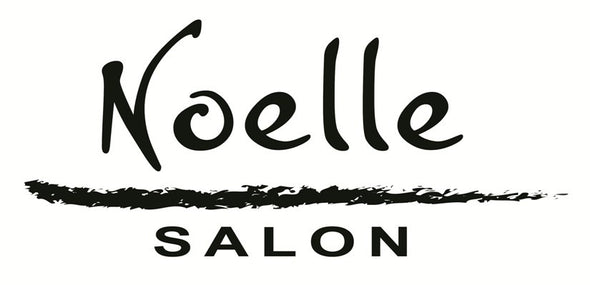Virgin Hair Color: What You Need to Know Before Dying

Virgin Hair Color: Know Before You Go
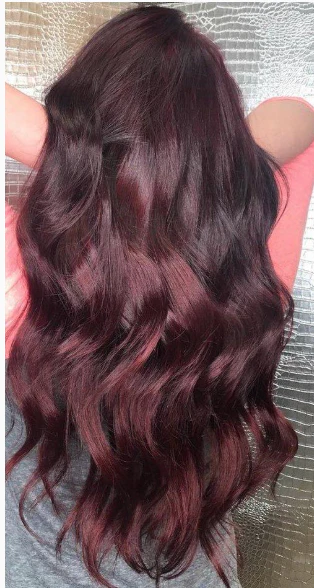
Coloring virgin hair isn't just a beauty decision—it's a personal milestone. Maybe it's your first time trying something bold, or perhaps you're finally giving in to that subtle balayage you've eyed for months. Either way, taking the plunge with untouched hair is different. Virgin strands are pure—free from chemicals, damage, and prior dyes, which means they react uniquely to color.
And here's the truth: what works for processed hair won't always fly here. You don't want to wing it and risk unpredictable tones, uneven results, or long-term damage. Whether you're going for a DIY bleach vibe or booking with a pro, the proper prep and understanding make all the difference.
This blog breaks it all down—what to expect, how to prepare, and how to keep your strands thriving post-color. Before you sit in that chair (or glove up at home), here's what you need to know.
What Is Virgin Hair—And Why Does It Matter?
If your hair has never been dyed, bleached, relaxed, or chemically treated, congrats—you're working with virgin hair. Think of it as your hair in its most untouched, unfiltered form: no shortcuts, no damage history, just pure, natural texture and shine. Whether your strands are sleek and straight or naturally curly, virgin hair has one powerful thing in common: the integrity of your hair.
The cuticle is intact, which means it's stronger, healthier, and more responsive to color. This makes it a dream canvas for your first hair coloring adventure. No past treatments to second-guess. No unexpected reactions. Just clean, ready-for-anything hair.
Why Virgin Hair Is Your Best Bet for That First Color?
Starting your color journey with virgin hair and using permanent hair color is like painting on a fresh, high-quality canvas—it takes one to color beautifully and hold onto it longer. You'll see richer tones, smoother blends, and fewer regrets. Since past chemicals haven't weakened it, your hair is better equipped to handle the process without snapping, frying, or falling flat.
Plus, the natural variation in virgin hair adds depth and dimension that synthetic dyes can't fake. Whether you're dreaming of a subtle shift or a dramatic change, working with virgin hair and permanent hair color gives you more control, more options, and better results. This isn't just a dye job—it's your hair's first transformation. Make it count.
How to Prep Virgin Hair for Its First Color?
Thinking of doing virgin color hair for the first time? Prep is everything. Think of it as laying the foundation—skip the prep, and your results may not shine. So start by giving your hair a clean slate: wash out buildup with a gentle shampoo, but don't go overboard. Follow up with a deep conditioner to strengthen strands and lock in moisture.
Next, scan for damage. Even untreated hair can have dry ends or sun stress—trim those frays for a smoother color finish. Don't skip the basics, as it can mess with how the dye sets.
Common Pre-Color Mistakes to Avoid Here Include:
-
Skipping the patch test: Always test the dye on a small section first to avoid allergic reactions or unexpected tones.
-
Coloring dirty hair: Too much oil or product can block proper color absorption.
-
Over-conditioning: Too much moisture can create a slippery surface that prevents the dye from setting well.
-
Rushing the process: Lack of research or prep often leads to blotchy, uneven color and regret.
How to Choose the Right Shade and Dye for Virgin Hair?
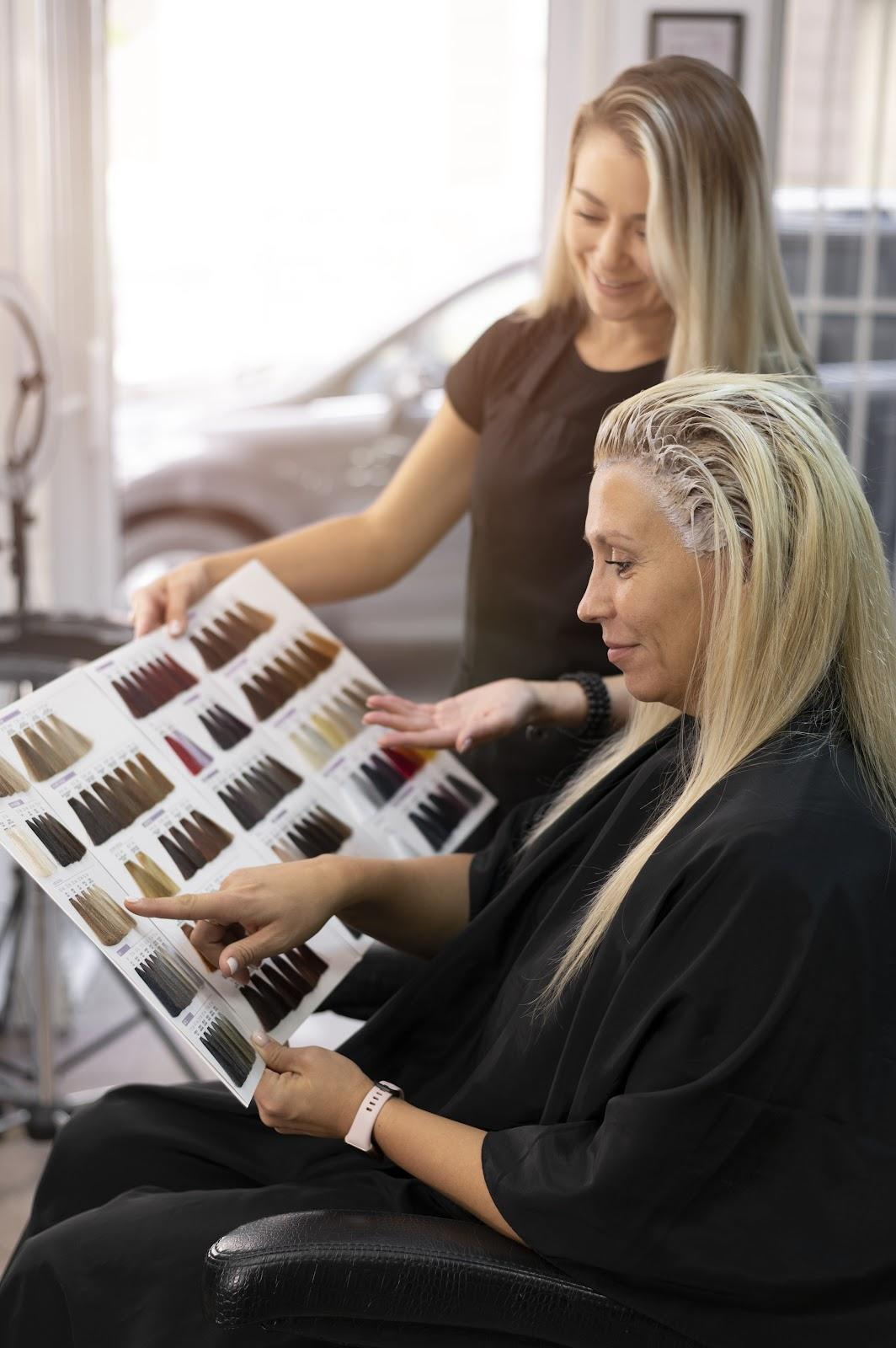
Your first color isn't just about the shade—it's about the statement. Whether you want something bold or barely there, the right color should sync with your skin tone, vibe, and lifestyle. For those with black hair, staying within two to three shades of your natural color can feel like a safe, seamless glow-up. But if you're craving a dramatic switch-up, go for it—your hair, your rules. Just make sure the dye you use respects your hair's virgin integrity.
Hair Dye Types, Decoded
There's no one-size-fits-all when it comes to dye. Here's what you need to know before making that first move:
-
Temporary Dye: Quick fix, no strings attached. Great for trial runs or bold weekend looks—gone in a couple of washes.
-
Semi-Permanent: It lasts a bit longer (4–6 washes) and adds shine and tone without any harsh commitment.
-
Demi-Permanent: More depth, more durability (12–24 washes), and gentle enough for a newbie's routine.
-
Permanent Dye: Long-haul color that grows out with your hair, not washes out. Perfect for covering grays or going light.
Always choose based on how bold you want to go and how often you're ready to maintain it.
Step-by-Step: How to Apply Color to Virgin Hair Like a Pro
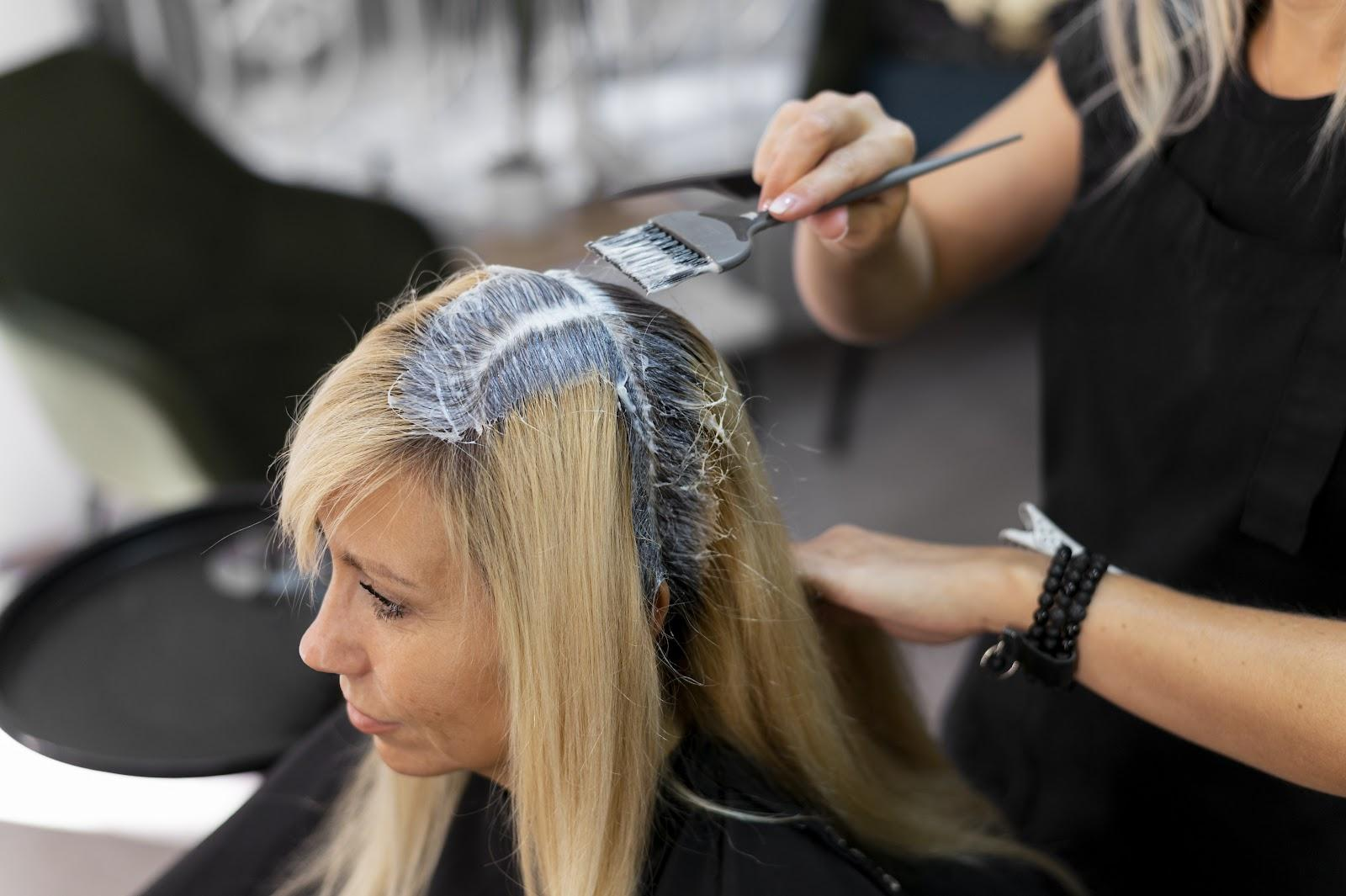
Coloring your virgin hair for the first time, and want to know the procedure? Deep breath—you've got this. Here's your step-by-step roadmap for flawless, even, and vibrant results:
1. Start with a Plan, Not Panic
Read the dye instructions from start to finish. It sounds basic, but skipping this step is the fastest way to regret it. Know your timing, prep needs, and whether you need a developer.
2. Gather the Right Tools
You'll need:
-
Color brush
-
Mixing bowl
-
Gloves
-
Hair clips
-
Wide-tooth comb
-
Old T-shirt or cape (trust us)
3. Section Like a Stylist
Divide your dry, detangled hair into four sections—two in front and two in back. If you have thick or long hair, add more sections. Secure each section with clips so you won't have to fight a tangled mess halfway through.
4. Mix and Test
Mix your color according to the instructions. Then, do a quick strand test—especially if you're going bold. It gives you a sneak peek of the final shade and confirms your hair reacts well.
5. Roots First, Ends Later
Working one section at a time, apply color starting from the roots. They take longer to process. Once the roots are done, work the color down to your ends.
6. Massage for Good Measure
Once all sections are covered, gently massage your scalp and hair to distribute the dye evenly. Think of it like applying a rich hair mask—every strand deserves attention.
7. Set a Timer, Not a Guess
Stick to the timing on the box or bottle. Too long, and you risk dryness. Too short, and the virgin hair won't take color properly.
8. Rinse—Don't Rush
Rinse with lukewarm water until the water runs clear. Then, follow up with the conditioner provided (or a good deep conditioner). This locks in color and moisture.
9. Air Dry and Admire
Let your hair air dry if possible to avoid heat damage. Then, bask in the glory of your fresh, new color. You did that!
Pro Tip:
Take a photo of your results and jot down what you used. This will help you tweak (or repeat) your process next time.
What to Expect After Coloring Virgin Hair?
You've rinsed, conditioned, and revealed the new you, but the hair journey doesn't stop at virgin hair color application. Here's what really happens post-coloring and how to stay ahead of the curve.
Immediate Effects
Freshly colored virgin hair can feel slightly different, especially if you've lifted several levels. Expect:
-
A change in texture (a bit drier or stiffer, especially after lightning)
-
Slight tightness or roughness if your hair isn't used to chemicals
-
The need to assess tone, check for evenness, or any missed spots
Long-Term Realities
Coloring virgin hair—even just once—shifts your maintenance game. Here's what to prepare for:
-
Texture Tweaks: Over time, hair may feel less silky due to structural changes from the dye.
-
Root Regrowth: Expect visible roots in 4–6 weeks. Plan for touch-ups or embrace the grow-out.
-
Fading: Even permanent color can dull without the right products. Use color-safe shampoo and hydrating treatments to stretch vibrancy.
-
Commitment: Your hair's no longer virgin—it deserves new care.
What Are the Aftercare Strategies for Colored Virgin Hair?
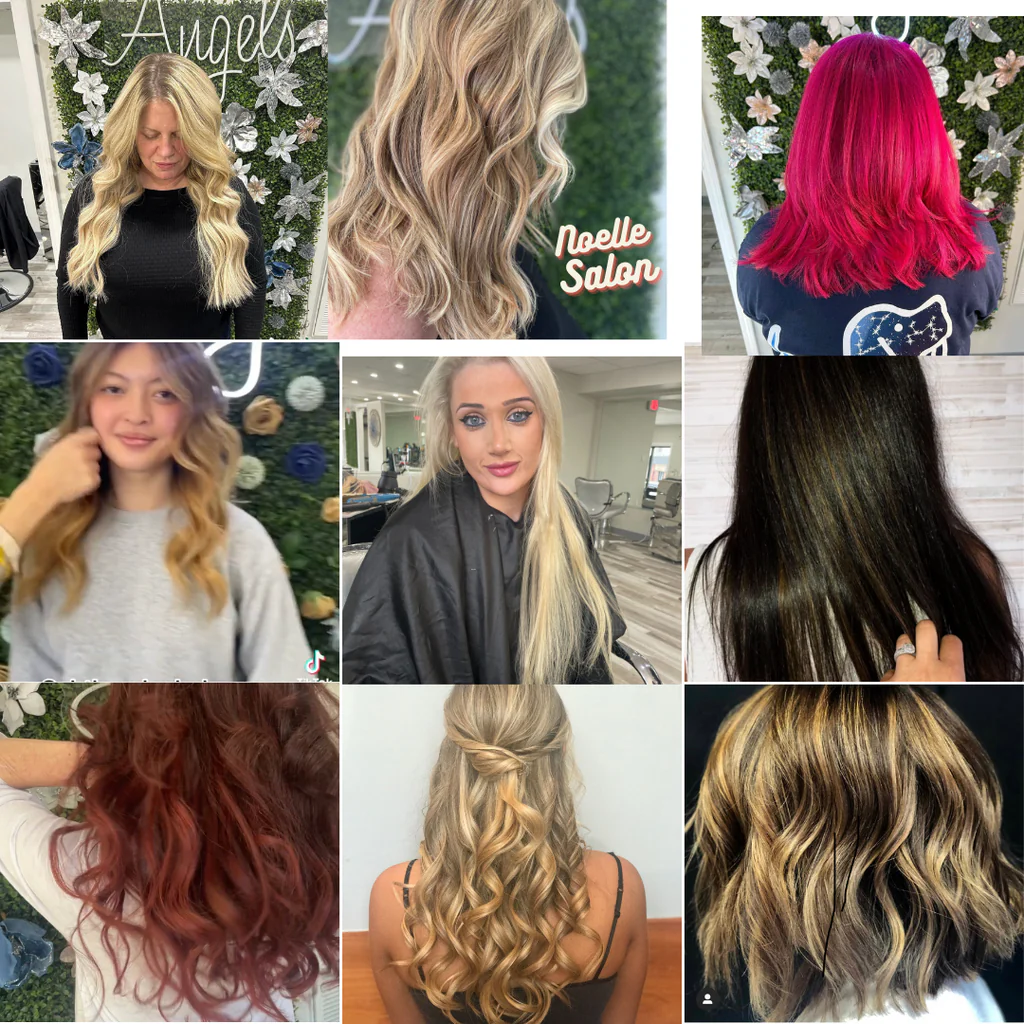
You've colored your virgin hair—now it's time to protect the investment. Post-color care isn't optional; it's the difference between vibrant, healthy hair and fast-fading regret. Here's how to keep that color rich and your strands thriving:
1. Use the Right Products
Ditch the drugstore basics. Choose sulfate-free, color-safe shampoos and conditioners that protect pigment, are peroxide-free, and nourish chemically altered hair.
2. Wash Less, Win More
Washing too often is a waste of money. Stick to 2–3 washes a week max to lock in color and preserve your scalp's natural oils.
3. Deep Condition, Religiously
Colored hair is thirstier—feed it. Weekly deep conditioning treatments restore moisture, reduce breakage, and help hair recover after chemical stress.
4. Heat Protection = Non-Negotiable
Flat irons and curling wands fade color fast. When styling with heat, always use a heat-protectant spray or serum.
5. Guard Against the Elements
Sun and chlorine are your color's enemies. Wear hats, use UV sprays, and coat your hair with leave-in conditioner before it dips in the pool.
Coloring virgin hair changes its chemistry—aftercare is your way of keeping it healthy, vibrant, and 100% worth it.
Unleash Your Hair's True Potential at Noelle Salon
At Noelle Salon, we specialize in transforming virgin hair with expertly crafted color treatments that highlight your natural beauty. Our skilled colorists work closely with you to create a personalized look that fits your style and enhances your hair's texture, whether you want a light shade or a rich, dark brown hue.
We use high-quality products to ensure vibrant, long-lasting results without compromising hair health. Whether you want a subtle change or a bold statement, we're here to make your hair color for virgin hair flawless.
Got any doubts or want to connect with us? Book your consultation now!
Conclusion: Embracing and Maintaining Your New Color
Coloring your virgin hair for the first time is more than just a change of hue—it's a bold step into a new you. From the moment you pick your shade to that first glance in the mirror, you've set the stage for a new level of self-expression. But remember, the process doesn't end once the dye settles. True vibrancy comes with ongoing care. With the right aftercare strategies in place, you'll maintain healthy, radiant hair that shines with every shade you choose.
Now, with this guide in hand, you're ready to take the plunge and confidently embrace your new color. It's not just about a hair transformation—it's about celebrating your individuality. So step forward, let your vibrant tresses shine, and enjoy every moment of this exciting new chapter!
Frequently Asked Questions
How Often Should I Color My Virgin Hair?
Deciding how often to color your virgin hair primarily depends on its growth rate and the type and intensity of color used. Generally, it's recommended to touch up your roots every four to six weeks to maintain a uniform color.
What is the difference between virgin hair and dyed hair?
Virgin hair is hair that has not undergone any chemical treatments, including color, perm, or relaxer. Dyed hair, on the other hand, has been modified using a chemical process wherein color molecules are deposited into the hair shaft.
Can virgin hair be re-colored without damage?
Yes, virgin hair can be recolored with proper care and dyeing techniques without significant damage. However, lightning or extensive color changes multiple times might impose a certain level of damage and require additional care to maintain hair health.
What are the best products to use on colored virgin hair?
Gentle shampoos and conditioners designed for color-treated hair are the best products for color virgin hair, especially for those with blonde hair. Additionally, UV protectants, heat protectant sprays, and regular deep conditioning treatments help maintain color vibrancy and hair health. It is advisable to consult with your stylist for personalized product recommendations.
